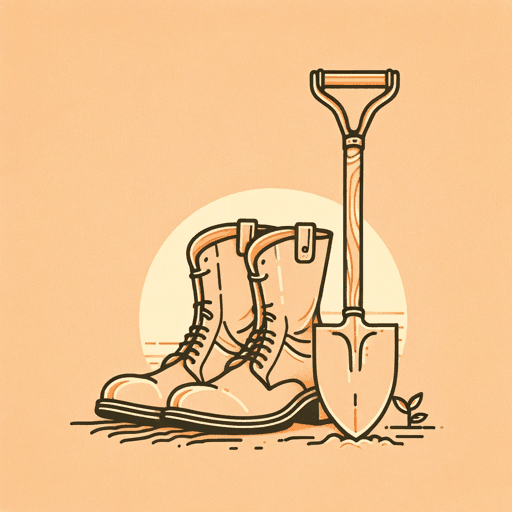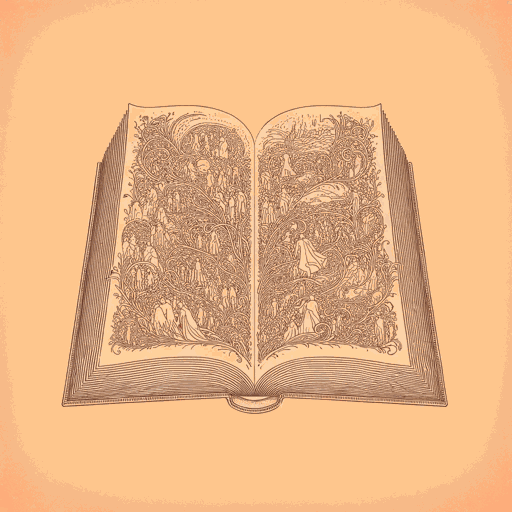46 pages • 1 hour read
Leo TolstoyHadji Murat
Fiction | Novel | Adult | Published in 1912A modern alternative to SparkNotes and CliffsNotes, SuperSummary offers high-quality Study Guides with detailed chapter summaries and analysis of major themes, characters, and more.
Summary and Study Guide
Overview
Hadji Murat, the final literary work of Russian author Leo Tolstoy, delves into the existential struggle of a region against forces of conquest and erasure. Published posthumously in 1912, it is a historically grounded novella set against the backdrop of the Caucasian War between Russia and the Circassians. The story revolves around the titular character, Hadji Murat, a courageous Caucasian Avar who defects to the Russians in a bid to rescue his family following a rift with his former ally, Imam Shamil. Spanning from the end of 1851 to early 1852, Hadji Murat is a character-driven narrative that navigates a spectrum of perspectives, ranging from humble Russian soldiers to Tsar Nicolas I himself. Tolstoy probes a multitude of characters, central or peripheral to the plot, examining their pain, motivations, vendettas, loyalties, and moral frameworks.
The novella reflects Tolstoy’s own engagement with anarchism, emphasizing the futility of war, critiquing imperialism of the state, and heralding the resilience of the human spirit. This resilience is embodied through the central metaphor of the Tartar Thistle, a symbol of the indomitable spirit amid widespread destruction, which serves to communicate Tolstoy’s anti-war message.
This guide refers to the First Vintage Classic Edition published in October 2012.
Plot Summary
Hadji Murat, an Avar rebel commander in late 1851, is on the run after a conflict with his former ally, Imam Shamil, who commands the Caucasian resistance. Murat’s family is now being held captive by Shamil, a Chechen leader who is at war with the Russians. With a bounty on Murat in place from Shamil, Murat seeks refuge with an old acquaintance, Sado. Despite the risk involved, Sado offers him shelter, and together, they make plans to contact the Russian Prince Vorontsov for help as Murat seeks to defect to the Russians, hoping to secure his family’s safety.
Murat successfully contacts the Russian military, who consent to a meeting. He arrives at Fort Vozdvizhensk, intending to garner support to overthrow Shamil and free his family. Upon surrendering to the Russians, Murat's interaction with Prince Vorontsov is laced with skepticism and pride: From Prince Vorontsov's perspective, acquiring Murat is a strategic win, yet he is cautious given Murat's history of battling Russian forces. Conversely, Murat is wary of placing his trust in the Russians because of his religion and his identity as a Chechen. Just before Murat’s arrival at Vozdvizhensk, a skirmish between Chechen fighters and Russian troops leads to the death of Avdeev, a Russian soldier who enlisted in place of his brother.
At his palace in Tiflis, Mikhail Semyonovich Vorontsov, the Viceroy and father of Prince Vorontsov, receives news of Hadji Murat's surrender to the Russians. The anticipation of Murat's arrival in Tiflis sparks excitement among Mikhail Vorontsov and his guests, who eagerly exchange stories of Hadji Murat's legendary exploits. Upon Murat's declaration of loyalty to the Russian Tsar in Tiflis, he commits to battling their mutual adversary, Shamil, and seeks assistance for a military operation to rescue his family from Shamil's capture.
In Tiflis, Vorontsov's aide, Loris-Melikov, meets with Murat to record his biography. Murat recounts to Loris-Melikov his early years, ascension to prominence, military achievements, and the eventual rift with Shamil. He narrates his shame after running away during the murder of his friend Umma Khan, a disgrace that continues to haunt him and propels his future resolve and valor.
Mikhail Semyonovich Vorontsov writes to Prince Chernyshov, the Russian War Minister, about Hadji Murat's defection to the Russians. Vorontsov describes Murat's concern for his family's well-being while also expressing caution about Murat's true intentions. Murat seeks to be relocated closer to Chechnya and requests financial support to facilitate his family's release. Vorontsov, understanding the risk of either placing complete trust in Murat or detaining him, which could dissuade others from defecting, proposes to meet Murat's demands. He plans to provide Murat with a Cossack escort and the support of Captain Loris-Melikov. Chernyshov, after receiving Vorontsov's report, criticizes Vorontsov's approach to Emperor Nicholas I, suggesting that relocating Murat to Central Russia could prevent potential espionage. However, the Emperor, dismissing Chernyshov's concerns, demands Murat remain in the Caucasus. With knowledge of Murat's surrender, Emperor Nicholas orders an intensified campaign against the Chechens, determined to crush their resistance with force. In January 1852, Nicolas’s call for an intensified campaign against the Chechens is answered: Russian forces defeat the Chechens after a surprise attack by Shamil's forces. After their win, the Russians ravage a Chechen village, the village where Sado lived.
Hadji Murat arrives at a Russian fort commanded by Major Petrov, where he is required to stay under strict surveillance. However, he forms bonds with the officers, especially with Butler and Petrov's wife, Marya Dmitrievna. Murat's stay at Major Petrov's leads to developing friendships, and Butler becomes fascinated with Murat’s mountain culture. Meanwhile, Murat's family remains under the watch of Shamil in Vedeno after his defection. When Shamil returns to Vedeno after losing to the Russians in battle, his council plots to lure Murat back using Murat’s son, Yusuf, as bait.
Murat is sent back to Tiflis; here, he pushes Vorontsov for a prisoner exchange to free his family and asks for a relocation closer to them. He requests to be sent to Nukha, a city closer to Vedeno. Despite receiving money for his family's rescue, news arrives that his allies are too intimidated by Shamil to attempt the rescue. Hadji Murat resolves to save his family himself, armed and ready for a potentially deadly mission.
Back at the Russian fort, Butler and Marya Dmitrievna receive the chilling revelation of Murat’s death through the delivery of his severed head. Butler learns of the story that caused Murat's death and last stand. He attempted to escape from the Russian fort and was followed by Cossack soldiers. When confronted by the Russian militia in a flooded rice field, Murat met his death with bravery and valor. His death resonates with the crushed thistle from the beginning of the story, bringing the narrative full circle. The story ends with a reminder of the crushed thistle, symbolizing the resilience of the human spirit.
Related Titles
By Leo Tolstoy

A Confession
Leo Tolstoy

Anna Karenina
Leo Tolstoy

God Sees the Truth, but Waits
Leo Tolstoy

How Much Land Does a Man Need
Leo Tolstoy

Master and Man
Leo Tolstoy

The Cossacks
Leo Tolstoy

The Death of Ivan Ilyich
Leo Tolstoy

The Kreutzer Sonata
Leo Tolstoy

War and Peace
Leo Tolstoy

What Men Live By
Leo Tolstoy

